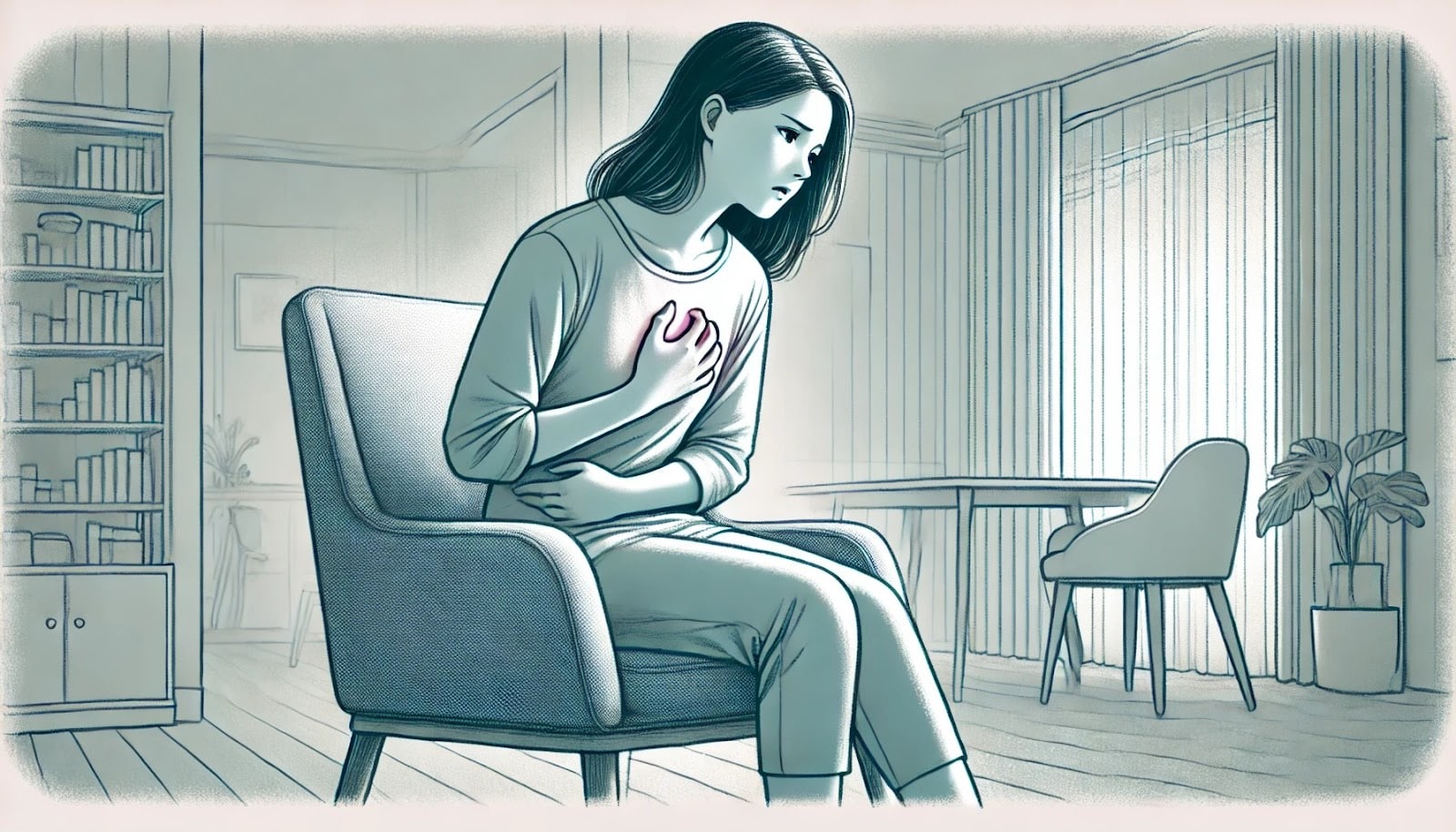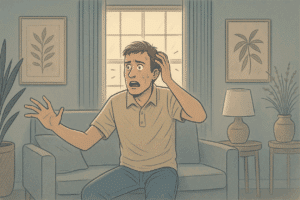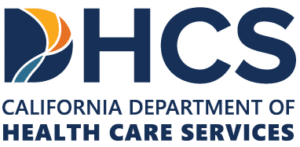Key Takeaways
- ADHD is a mental health condition that affects focus, impulse control, and activity levels, impacting daily life.
- Ritalin effectively treats ADHD by increasing dopamine and norepinephrine levels in the brain to improve attention and reduce impulsive behaviors.
- Ritalin is available in immediate-release (3-4 hours duration) and extended-release (8-12 hours) formulations, allowing for flexible dosing schedules based on individual needs.
- While effective, Ritalin can cause side effects such as heart rate, nervousness, and dizziness, which should be monitored by healthcare providers.
- A Mission for Michael (AMFM) offers comprehensive ADHD treatment through personalized treatment plans that address the whole person by combining medication management, psychotherapy, and lifestyle adjustments.
What is ADHD
ADHD, or Attention Deficit Hyperactivity Disorder, is a neurodevelopmental disorder that commonly manifests in childhood and can persist into adulthood. It’s characterized by patterns of inattention, hyperactivity, and impulsivity that interfere with functioning or development. 1
ADHD is more than just a challenge in staying focused. It affects how individuals interact with their environment, often causing disruptions in school, work, and personal relationships.
Impact on Daily Life
Children with ADHD may struggle in school due to difficulties in focusing on tasks or following instructions. Adults with ADHD may find it challenging to manage time effectively, meet deadlines, or maintain organization in their personal and professional lives.
These challenges can lead to frustration and impact self-esteem.
| A Mission For Michael: Expert Mental Health Care Founded in 2010, A Mission For Michael (AMFM) offers specialized mental health care across Southern California, Washington, and Virginia. Our accredited facilities provide residential and outpatient programs, utilizing evidence-based therapies such as CBT, DBT, and EMDR. Our dedicated team of licensed professionals ensures every client receives the best care possible, supported by accreditations from The Joint Commission and the California Department of Health Care Services. We are committed to safety and personalized treatment plans. Start your recovery journey with AMFM today! |
Causes of ADHD
The exact cause of ADHD is not fully understood, but it is believed to involve a combination of genetic, environmental, and neurological factors. ADHD tends to run in families, suggesting a genetic component.
Environmental factors like exposure to lead, prenatal exposure to alcohol or tobacco, and low birth weight have been associated with an increased risk of ADHD. Additionally, early exposure to stress or trauma may contribute to the disorder.
Differences in brain structure and function have also been observed in individuals with ADHD. These include variations in the size and activity of certain brain regions, particularly those involved in attention and impulse control. Neuroimaging studies have shown that these brain differences may contribute to the symptoms of ADHD. 2
Symptoms of ADHD
Inattention Symptoms
Inattention involves difficulty sustaining focus, following instructions, and organizing tasks. People with ADHD may often lose items, make careless mistakes, or seem not to listen when spoken to directly.
Hyperactivity Symptoms
Hyperactivity is characterized by excessive movement and an inability to stay still. This can manifest as fidgeting, talking excessively, or an inability to engage in quiet activities.
Impulsivity Symptoms
Impulsivity involves making hasty actions without considering the potential consequences. This can lead to social difficulties, as individuals may interrupt others or have trouble waiting their turn. 3
Types of ADHD
ADHD is categorized into three types based on the predominant symptoms. 4
- Predominantly Inattentive Type: This type is characterized by symptoms of inattention without significant hyperactivity-impulsivity. Individuals may appear daydreamy, easily distracted, or forgetful.
- Predominantly Hyperactive-Impulsive Type: In this type, hyperactivity and impulsivity are the main symptoms. Individuals may be restless, talk excessively, or struggle with impulse control.
- Combined Type: The combined type involves a mixture of both inattentive and hyperactive-impulsive symptoms. This is the most common type of ADHD diagnosis.
Ritalin & How It Is Used for ADHD

Ritalin is a stimulant that helps improve focus, attention, and impulse control in individuals with ADHD.
Ritalin, also known by its generic name methylphenidate, is a central nervous system stimulant. It works by increasing the levels of certain neurotransmitters in the brain, which helps improve attention and reduce impulsive behavior. Ritalin is available in various forms, including tablets and extended-release capsules, allowing for flexible dosing options. 5
Age and Eligibility
Ritalin is typically prescribed for children aged six years and older, adolescents, and adults diagnosed with ADHD. However, the decision to prescribe this medication also considers the severity of symptoms and how they impact daily life. Younger children may be prescribed Ritalin in some cases, but this is less common and requires careful monitoring by a healthcare provider.
How Ritalin Works
The active ingredient in Ritalin is methylphenidate. This substance acts as a stimulant, which might seem counterintuitive for treating hyperactivity. However, by enhancing the activity of certain neurotransmitters, methylphenidate helps improve focus and reduce impulsive behaviors.
Ritalin primarily affects the brain’s dopamine and norepinephrine pathways. These neurotransmitters play crucial roles in attention, motivation, and executive function. By increasing their availability, Ritalin helps improve the symptoms of ADHD, allowing individuals to focus better and manage their impulses. 6
Additionally, studies have shown that Ritalin can enhance the brain’s ability to process information and perform tasks more effectively. This can lead to noticeable improvements in academic and occupational performance for individuals with ADHD. 7
Ritalin’s Effects on ADHD
Improvement in Focus
One of the primary benefits of Ritalin is its ability to enhance focus and concentration. This is particularly beneficial in academic settings, where sustained attention is crucial for learning and completing tasks. Many individuals report being able to concentrate better and for longer periods, which can lead to improved academic performance and productivity.
Reduction in Hyperactivity
Ritalin also helps reduce hyperactivity, allowing individuals to engage in activities without excessive movement or restlessness. This can improve social interactions, as individuals are better equipped to participate in group activities and maintain appropriate behavior in various settings.
Behavioral Changes
Ritalin can lead to positive behavioral changes. Individuals may find it easier to manage impulsive behaviors, leading to improved relationships and better decision-making. This can enhance self-esteem and overall quality of life.
How Long Ritalin Takes to Work
Understanding how quickly Ritalin takes effect can help set realistic expectations for individuals starting this medication. The onset of action can vary based on the formulation and individual factors.
Immediate-release Ritalin typically begins to work within 30 to 60 minutes after ingestion. This rapid onset allows individuals to experience symptom relief relatively quickly. Extended-release formulations may take slightly longer to take effect but provide more prolonged symptom control. 8
Factors Affecting Onset
Several factors can influence how quickly Ritalin takes effect. These include:
- The specific formulation of Ritalin (immediate vs. extended-release)
- Individual metabolism and body chemistry
- Whether the medication is taken with or without food
Duration of Effectiveness
The duration of Ritalin’s effectiveness varies depending on the formulation used. Immediate-release forms typically last around 3-4 hours, while extended-release forms can provide symptom relief for up to 8-12 hours. This flexibility allows healthcare providers to tailor treatment plans to fit the individual’s daily schedule and needs.
Follow the prescribed dosing schedule to maintain consistent symptom control throughout the day. If you notice a decrease in effectiveness, discuss this with your healthcare provider, as adjustments may be necessary.
Ritalin Doses
Standard dosage guidelines for Ritalin vary based on the formulation and the individual’s age and needs. For immediate-release Ritalin, the typical starting dose for children is 5 mg taken 2-3 times daily, with adjustments made as needed. Extended-release formulations may start at higher doses, such as 20 mg once daily.
While for adults the typical dose for the immediate release of Ritalin is between 20 – 30 mg taken 2-3 times daily. However, the maximum recommended daily dose is 60 mg. 9
Extended-release formulations for adults may start at 40-60 mg once daily.
Adjustments for Age and Weight
Dosing adjustments are often necessary to account for age and weight differences. Younger children or those with lower body weight may require lower doses to achieve the desired effects without causing adverse side effects.
Regular monitoring and communication with a healthcare provider are essential to ensure the dosage remains appropriate as the individual grows or experiences changes in symptoms.
Possible Side Effects of Ritalin
Common side effects of Ritalin include increased heart rate, nervousness, and dizziness. These symptoms are usually mild and temporary. Monitor these effects and discuss any concerns with a healthcare provider, who can provide guidance on managing them effectively.

In rare cases, Ritalin can also cause severe side effects that require immediate medical attention. These may include chest pain, shortness of breath, or signs of an allergic reaction such as rash or swelling.
Other severe side effects can include changes in mood or behavior, such as increased aggression or depression. If any of these symptoms occur, seek medical help promptly. 10
Take the Next Step Toward Better Mental Health

At A Mission for Michael (AMFM), we understand the complex challenges that ADHD presents in daily life. While medication can be valuable, we believe in a comprehensive approach to ADHD treatment.
Our specialized home-like facilities across California, Virginia, and Washington offer more than just medication management. We create personalized treatment plans addressing the whole person-mentally, emotionally, and physically.
If you’re considering Ritalin or exploring alternatives, our experienced clinicians provide expert guidance on medication options, potential side effects, and complementary therapies like CBT, mindfulness practices, and executive functioning coaching.
ADHD doesn’t have to limit your potential. With proper support, you can develop strategies to enhance focus, organization, and impulse control.
Take the first step toward managing your ADHD effectively by calling us at 866-478-4383 for a free, confidential assessment.
Frequently Asked Questions (FAQ)
Is Ritalin safe for young children?
Ritalin is generally considered safe for children aged six years and older when prescribed by a healthcare provider. However, monitor children for side effects and maintain regular communication with the provider to ensure the medication is appropriate and effective.
Can Ritalin be taken with other medications?
Ritalin can interact with other medications, so inform the healthcare provider of all medications and supplements being taken. This helps prevent potential interactions and ensures the safety and effectiveness of the treatment plan.
What should I do if a dose is missed?
If a dose of Ritalin is missed, it is generally recommended to take it as soon as remembered, unless is close to the time of the next dose. In that case, skip the missed dose and continue with the regular schedule. Doubling up on doses can increase the risk of side effects and should be avoided.
How can I manage Ritalin’s side effects?
Managing side effects involves monitoring symptoms and discussing them with a healthcare provider. They may suggest strategies such as dose adjustments or timing changes. Lifestyle modifications, such as maintaining a balanced diet and regular exercise, can also help mitigate side effects.
How does AMFM’s approach to ADHD treatment differ from standard care?
AMFM offers a comprehensive approach to ADHD treatment that extends beyond symptom management. We provide customized care plans based on thorough assessments, combining evidence-based therapies like CBT with wellness-focused options. This addresses the whole person; mental, emotional, and physical needs.
Resources
1. https://www.nimh.nih.gov/health/topics/attention-deficit-hyperactivity-disorder-adhd
5.https://www.ncbi.nlm.nih.gov/books/NBK482451/
6. https://pmc.ncbi.nlm.nih.gov/articles/PMC1119521/
7. https://www.brown.edu/news/2020-03-19/ritalin
8. https://pmc.ncbi.nlm.nih.gov/articles/PMC7207053/







